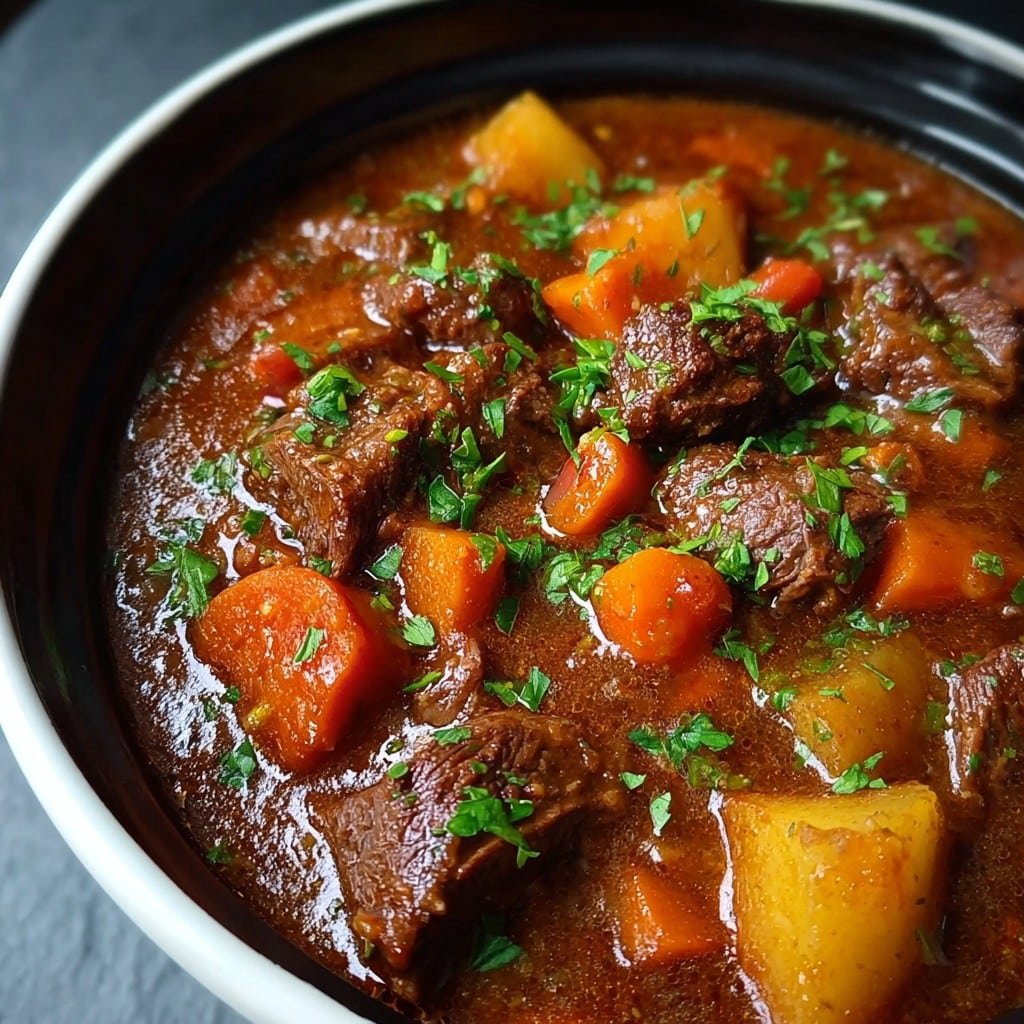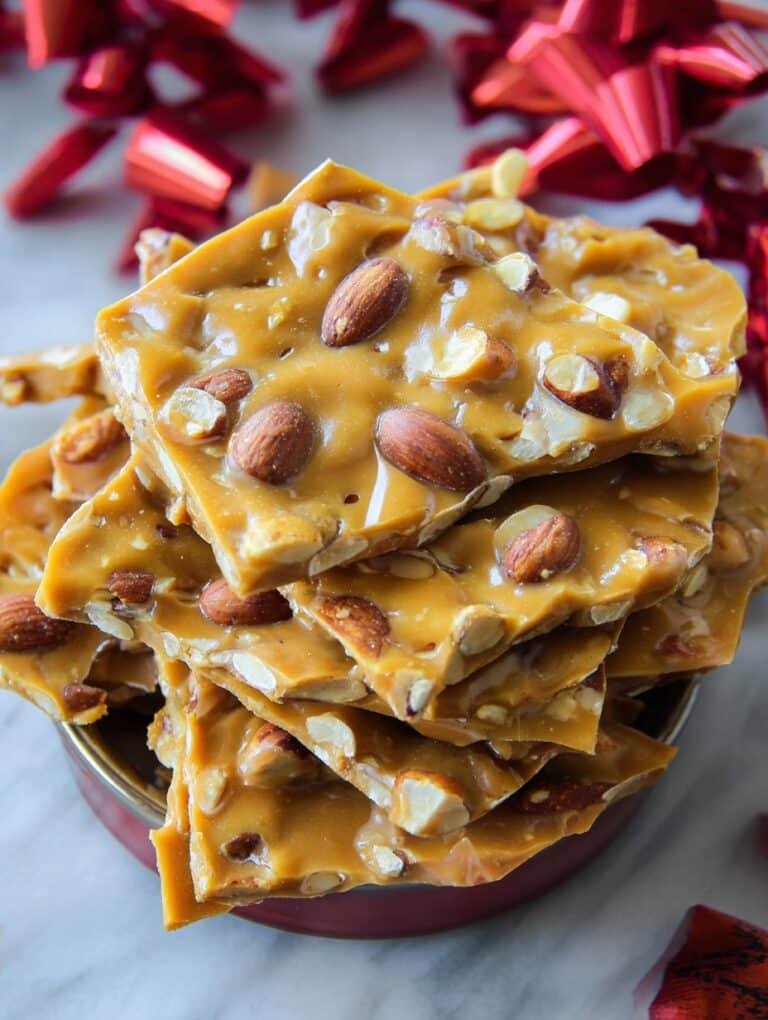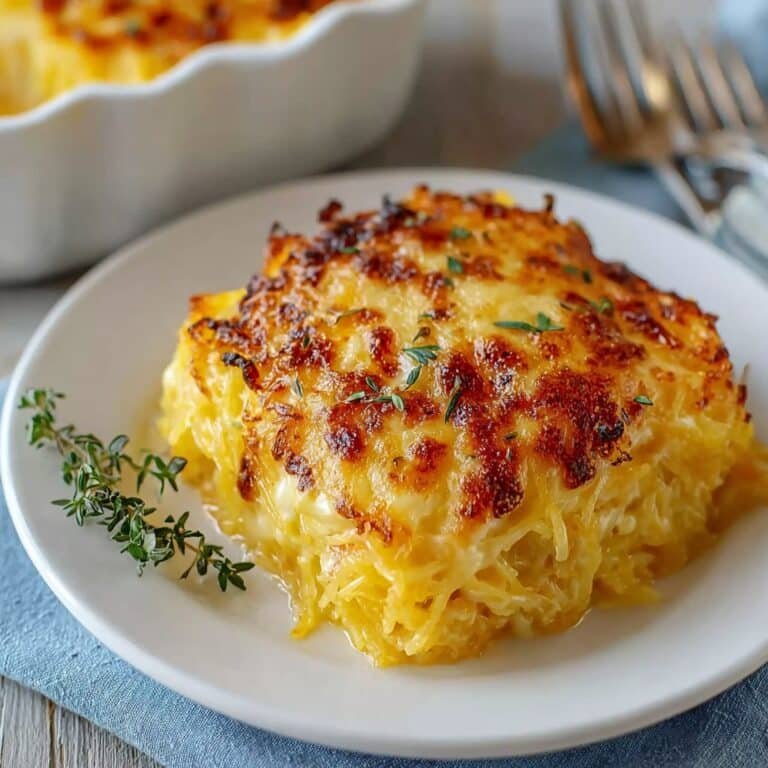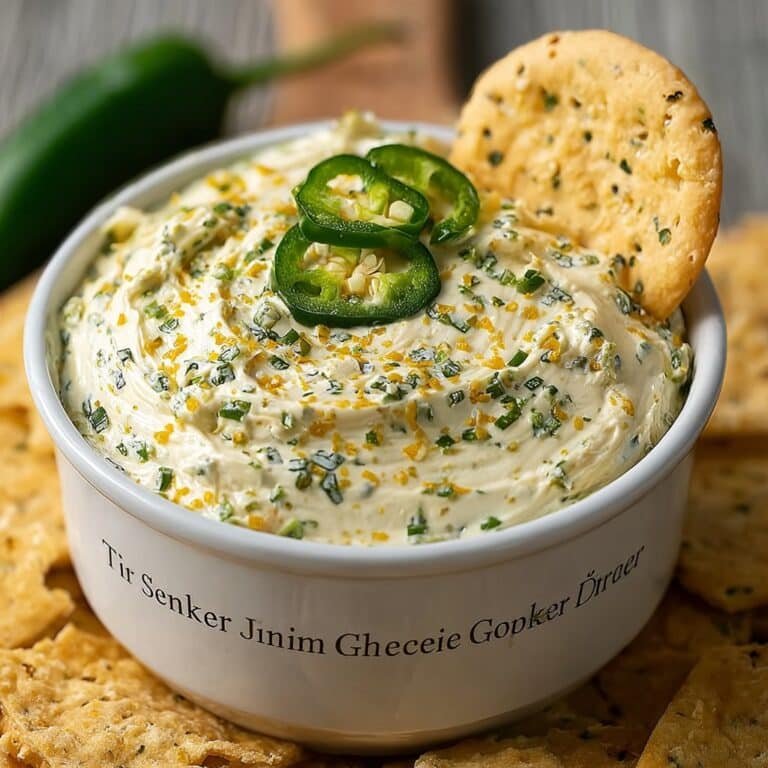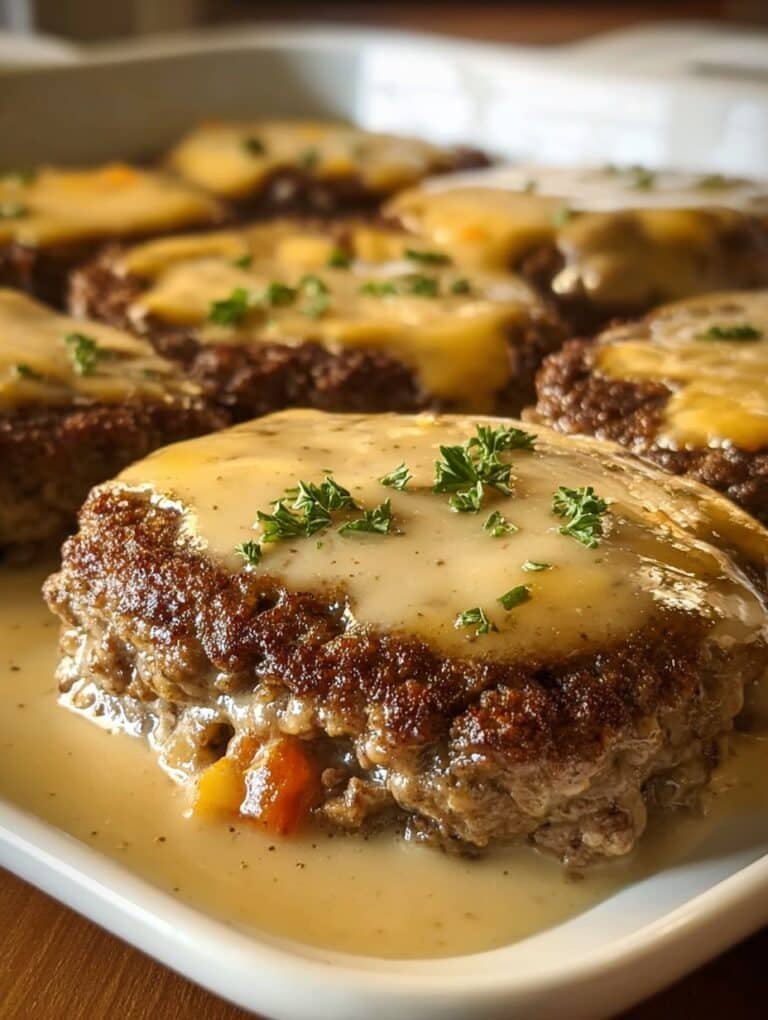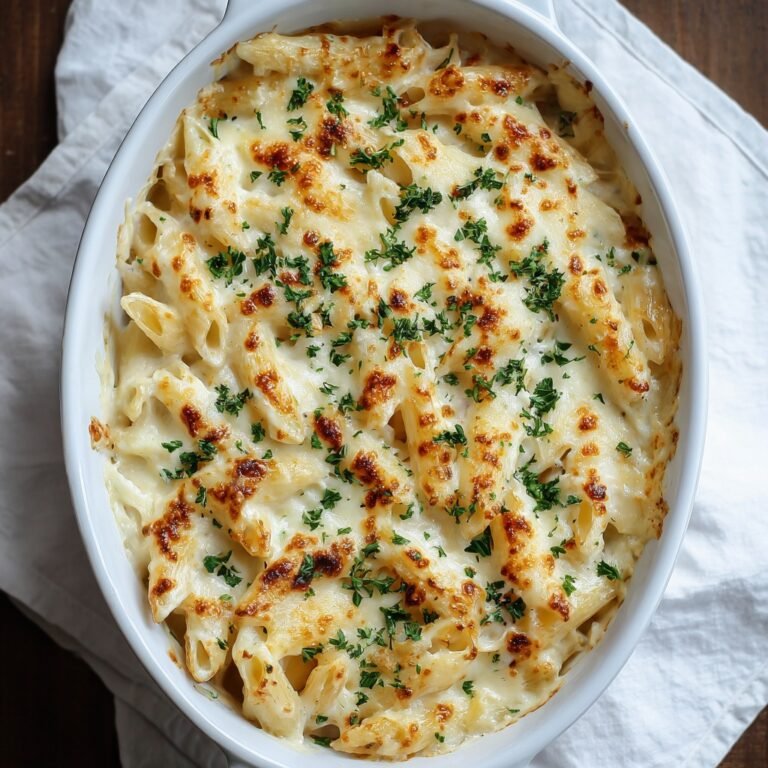Let Me Tell You About This Stew—It’s a Little Story
Alright, friend, gather ’round the imaginary campfire. Let’s talk about this slow cooker venison stew recipe—which, honestly, is the answer to those chilly days when you’re too tired to hover near the stove. I started making this when my brother-in-law kept sending us venison, thinking we’d suddenly become pioneers. (We did not; we mostly googled a lot.) The first time, I overcooked everything into shoe leather, but eventually, after plenty of taste-testing (and some mild panic), the house started smelling incredible. It’s now my go-to for cold weather, and yeah—I sometimes sneak a cup before it’s ready just to test… for science.
Why You’ll Love This (At Least, My Family Does!)
I make this whenever I need something hearty that basically cooks itself while I pretend to be productive on Sundays. My family goes a bit bonkers for it because the venison gets fall-apart tender (no, really — even my pickiest eaters don’t complain). It’s a good one for when you don’t want to fuss. Honestly, I’ve tried skipping the step where you brown the meat, and regretted it—though sometimes, when it’s just me, I just chuck it in raw. See? Real life. Oh, and cleanup is a breeze, minus that one time I forgot to soak the slow cooker (don’t recommend that route).
Here’s What You’ll Need (Give or Take)
- 2 lb venison stew meat, cubed (or beef, if somebody “helpfully” used your last venison for burgers)
- 2-3 large potatoes, cubed (sweet potatoes work, too—sometimes I mix ’em for fun)
- 4 carrots, sliced (or a handful of baby carrots if you’re feeling lazy, which, let’s be honest, happens)
- 1 big onion, chopped (red onions look pretty but any old onion is fine)
- 3 cloves garlic, minced (or just use that jarred stuff in a pinch, I won’t tell)
- 2-3 cups beef or game stock (I’ve totally used bouillon cubes + water before, works fine)
- 2 tbsp tomato paste (but once I forgot and used a can of diced tomatoes, not quite the same but still tasty)
- 1 tbsp Worcestershire sauce (optional, but gives it zing)
- 1 tsp dried thyme (fresh if you’ve got fancy herb friends)
- 1 tsp dried rosemary (I sometimes skip it, no one notices)
- Salt & pepper to taste (my grandmother insisted on coarse sea salt—eh, whatever you’ve got)
- 1 cup frozen peas (throw them in at the end, or not; I forget half the time)
The How-To (With Tangents)
- Browning time (optional, but worth it): Drizzle a bit of oil in a hot pan. Brown the venison in batches if you remember—don’t crowd it, or it’ll just steam (ask me how I know). Dump it in your slow cooker.
- Veggie layer: Toss in your chopped potatoes, carrots, onion, and garlic over the meat. (This is where I realize I should have used a bigger slow cooker. Happens every time.)
- Sauce fixings: In a measuring jug or bowl, whisk together your stock, tomato paste, Worcestershire, and herbs. Pour it all over the contents of your slow cooker. If it looks like a messy swamp, you’re doing it right.
- Salt & pepper: Don’t be shy. Add more than you think; venison can handle it. (Though, if you overdo it, just add a potato. That trick actually works!)
- Cook: Lid on. Low for 8-ish hours, or high for about 4-5. I stick with low, unless it’s a last-minute scramble before guests arrive. Sometimes, halfway through, I give it a stir but honestly, you can ignore it and it’ll still be delicious.
- Peas: At the end, add peas. Stir, let sit for 10 minutes (this is when I usually sneak a taste, or two, for “quality control”).
Notes from My (Sometimes Messy) Kitchen
- I thought adding more garlic would blow everyone away. Nope. It just tastes more garlicky — not bad, just… very garlicky. I dial it back now.
- If you have time, let the stew sit for an hour after cooking; the flavors are way better. But obviously, if your crowd is starving, just dig in.
- Stir the stew about halfway through if you remember, but honestly, it’s not a dealbreaker.
Variations (The Good, the Bad, the “Eh”)
- Once, I tried it with parsnips instead of carrots. Tasted a bit like Christmas? Not my favorite, but maybe you’ll love it.
- Red wine—yes, even a splash or two—turns this into a sort of rustic, cozy wonder. Or maybe it just gives you an excuse to open a bottle.
- Beef instead of venison: It’s not really the same, but honestly, unless your taste buds are Sherlock Holmes, you’ll still be happy.
What If You Don’t Have A Slow Cooker?
Okay, so I keep saying a slow cooker is essential, but once, when mine quit mid-cook, I just bunged everything in a Dutch oven at 300F for 3-4 hours. Worked fine. (Wouldn’t try it with a terracotta plant pot, though…)
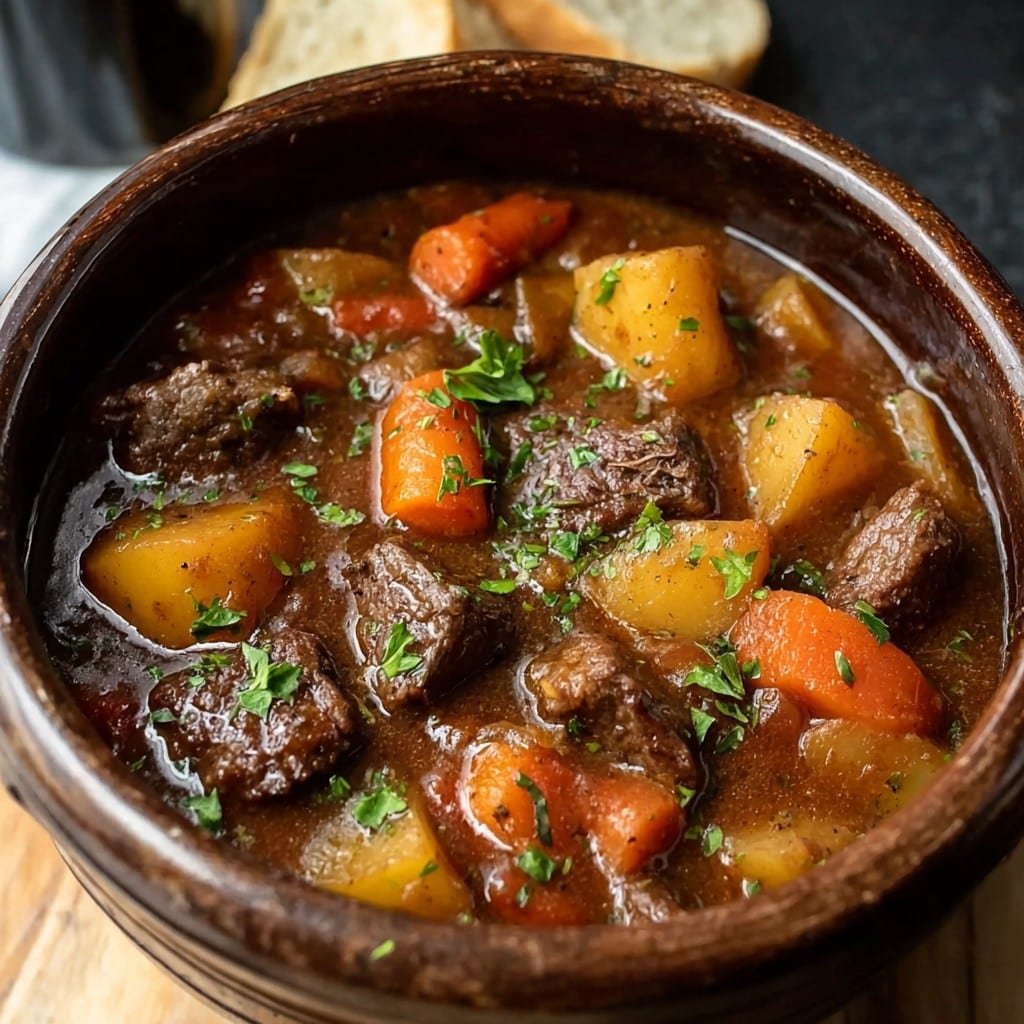
How To Store Leftovers (If You Even Get That Far)
This stew keeps 4 days in the fridge (in theory—though honestly, it never lasts that long in my house; someone always “samples” a midnight bowl). Freezes well too; I portion it out so lunch is sorted. Little tip: reheat gently so the meat stays tender.
How I Serve It (And Occasional Arguments About Bread)
I serve this with hunks of crusty bread—personally, I prefer a rye, but my partner always lobbies for sourdough (not that he ever bakes it). Sometimes, on a totally unrelated note, I’ve been known to add a dollop of crème fraîche on top. Why? Because I can. If you want some other cozy side, check out these mashed potatoes—they’re basically foolproof.
Pro Tips (Learned the Hard Way)
- Don’t skip browning the meat if you’ve got the time. One rushed night I just chucked everything in raw, and honestly, it was edible but not awesome.
- If you’re worried about your stew being too thin, mash a few potatoes at the end. Instant thickening. I may or may not have learned this trick from BBC Good Food.
- Leave the lid on! (I’m an over-checker, but every peek adds more cooking time; learned that the hard way when dinner lagged until after 8.)
Venison Stew FAQs I Actually Get
- Can I use frozen venison? Actually, yes. I sometimes start with frozen if I forget to thaw. It adds a little time (maybe half an hour more), but no big deal.
- Why does my venison taste gamey? That’s just venison, sometimes. You can soak it in milk first if you want, or just add more Worcestershire. Or both!
- Can I make this ahead of time? Oh yes; in fact, I think it tastes better the next day, like most stews (if it survives that long, anyway).
- How do I make it gluten free? It already is, unless you put in some random ingredient. Just double-check your Worcestershire sauce.
- Can I use a pressure cooker? Yep, but watch your timing. I once turned everything to mush in the Instant Pot—wasn’t my proudest moment.
By the way, if you’re new to slow cooking or want tips, I actually like this resource at The Kitchn; they’re not preachy, which is a bonus.
Ingredients
- 2 pounds venison stew meat, cut into 1-inch cubes
- 3 cups beef broth
- 3 carrots, sliced
- 3 potatoes, peeled and diced
- 2 celery stalks, chopped
- 1 large onion, diced
- 3 cloves garlic, minced
- 2 tablespoons tomato paste
- 1 teaspoon dried thyme
- 1 teaspoon salt
- 1/2 teaspoon black pepper
- 2 tablespoons olive oil
Instructions
-
1Heat olive oil in a large skillet over medium-high heat. Brown venison cubes on all sides in batches.
-
2Transfer browned venison to the slow cooker. Add carrots, potatoes, celery, and onion.
-
3In a small bowl, combine beef broth, tomato paste, garlic, thyme, salt, and black pepper. Pour over the meat and vegetables.
-
4Stir ingredients gently to combine. Cover and cook on low for 8 hours, or until venison and vegetables are tender.
-
5Serve hot, garnished with fresh herbs if desired.
Approximate Information for One Serving
Nutrition Disclaimers
Number of total servings shown is approximate. Actual number of servings will depend on your preferred portion sizes.
Nutritional values shown are general guidelines and reflect information for 1 serving using the ingredients listed, not including any optional ingredients. Actual macros may vary slightly depending on specific brands and types of ingredients used.
To determine the weight of one serving, prepare the recipe as instructed. Weigh the finished recipe, then divide the weight of the finished recipe (not including the weight of the container the food is in) by the desired number of servings. Result will be the weight of one serving.
Did you make this recipe?
Please consider Pinning it!!

